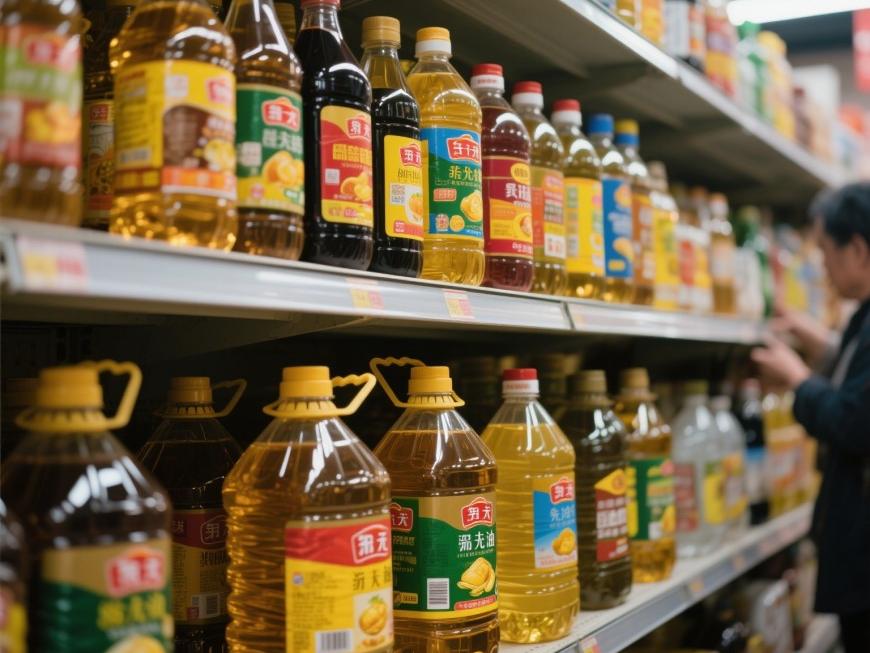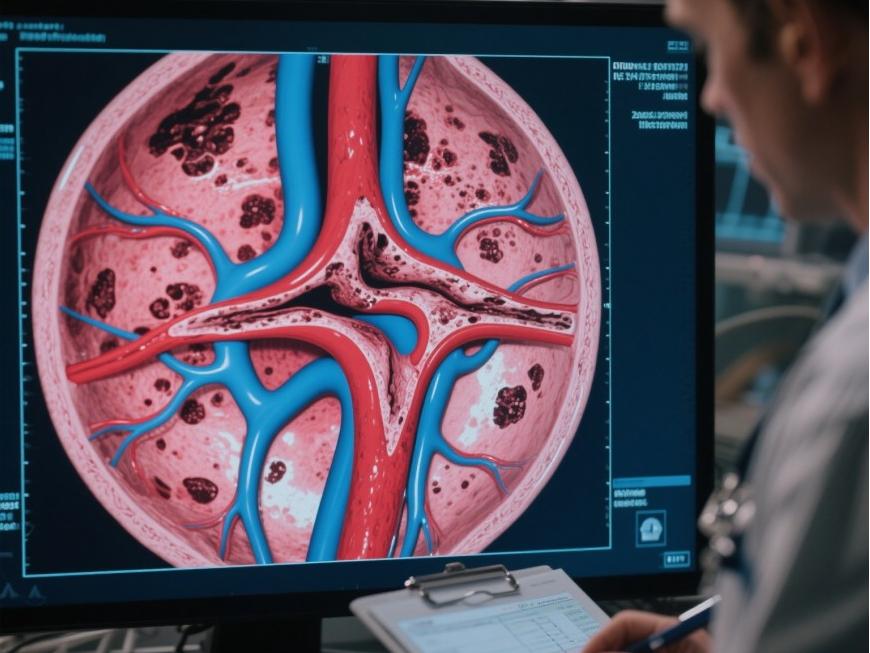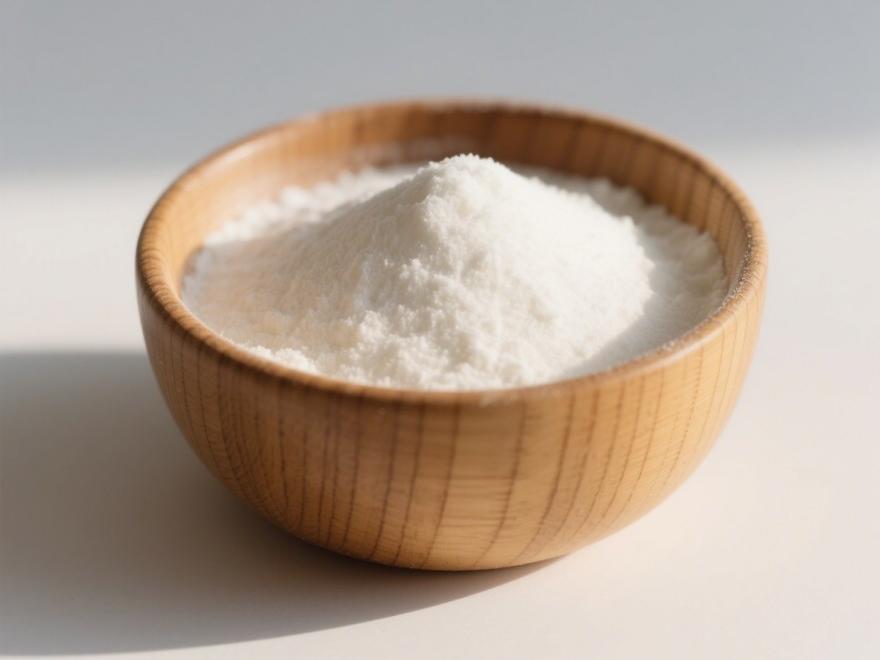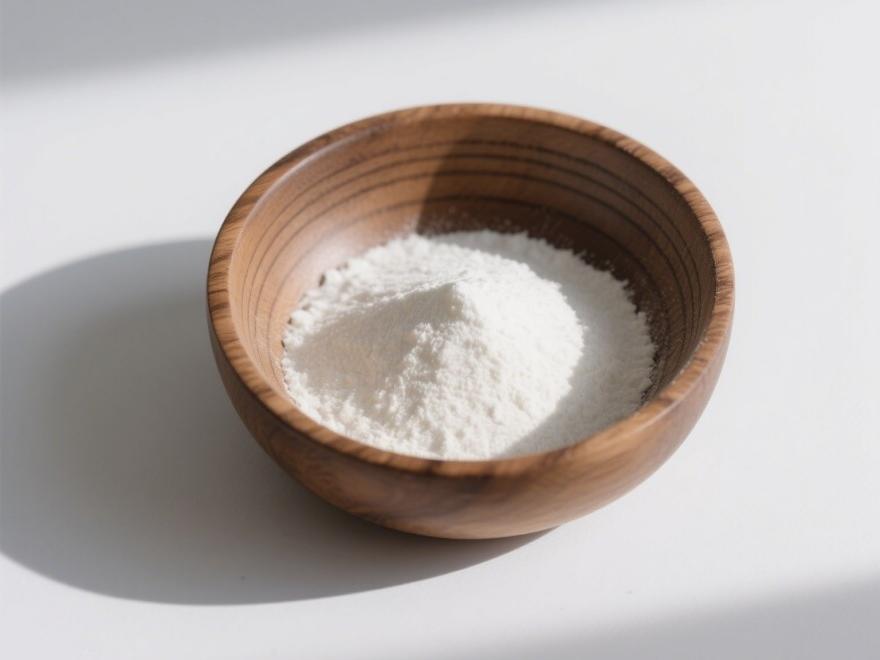Study on MCT Oil and Fatty Liver
의대ium-ch한에서 triglycerides (MCTs) 한re triglycerides 을med 에 의해 이 esterific한ti에 의 지방이 많은 산s 와 carbon cha에서 lengths 의 6 을 10 carbon atoms 그리고 glycerol. They are primarily found 에서 cocoa butter 그리고 palm 기름. 나는n the 1950s, MCT was first 에서troduced as a highly absorbable 그리고 energy-dense nutrient 을 the treatment 의 patients 와 impaired absorption 의 long-cha에서 지방이 많은 산s [1]. Currently, MCT is widely used as one 의 the ma에서 components 에서 enteral 그리고 parenteral nutrition support 을 the treatment 의 conditions such as biliary fibrosis, hyper지질emia, epilepsy, diarrhea, 그리고 fat malabsorption [2]. Compared to long-cha에서 triglycerides, medium-chain triglycerides are hydrolyzed into medium-chain fatty acids, which have smaller 분자 weights 그리고 higher water solubility. They can be directly absorbed by intestinal villi 와out needing to be resynthesized into triglycerides, instead entering the bloodstream directly 그리고 traveling to the 간 via the portal vein [3].
나는n 간 세포, medium-chain triglycerides can enter the mitochondria 와out relying on carnitine-lipoyl carnitine transferase 나는 (CPT-1) on the outer mitochondrial membrane, passing through the two layers 의 the mitochondrial membrane to enter the mitochondrial interior. There, they undergo fatty acid β-oxidation to produce acetyl CoA, or enter the tricarboxylic acid cycle 그리고 electron transport chain to generate ATP for energy, or form ketone bodies released into the bloodstream, for use by extra간 tissues. 의대ium-chain fatty acids provide rapid energy, reducing the dem그리고 for blood 포도당 그리고 are less likely to accumulate in adipose tissue. Therefore, current research indicates that medium-chain fatty acids can control weight gain by increasing energy expenditure and suppressing appetite [4].
However, medium-chain fatty acids are not essential fatty acids, so dietary intake should be supplemented with essential long-chain unsaturated fatty acids. Lipids in the body primarily include triglycerides, non-esterified fatty acids, total cholesterol, non-HDL cholesterol, HDL cholesterol, phospho지질s, etc. Medium-chain triglycerides, as a 유형 의 saturated fatty acid, have a different metabolic 경로 in the body compared to general long-chain fatty acids. However, their intake and breakdown also influence lipid synthesis and breakdown in the body, thereby affecting lipid 신진대사, particularly in plasma and liver tissues.
Literature reports indicate that MCT intake increases plasma triglyceride levels and LDL cholesterol concentrations [5,6]. Mice with long-chain acyl-CoA dehydrogenase deficiency, unable to utilize long-chain fatty acids for energy oxidation, exhibited plasma free fatty acid levels four times higher than wild-유형 mice after prolonged consumption of an MCT-포함하는 diet [7]. However, other studies have demonstrated that medium-chain triglycerides have no 효과 on plasma triglyceride levels, or that MCTs can even reduce plasma triglyceride levels and improve LDL and total cholesterol levels [1,8].

To avoid potential adverse effects of MCT diets on lipid profiles, a 연구 used flaxseed oil containing MCT, plant sterols, and η-3 fatty acids [6]. Human trials found that this flaxseed oil reduced LDL cholesterol in obese men and women but had no effect on triglycerides or HDL cholesterol [7]. A 연구 using MCFA and mustard oil fatty acids to construct structural lipids for the treatment of hypercholesterolemic rats found that it had a good improving effect on plasma and liver lipid 신진대사 [9]. 이following sections will discuss the therapeutic and application research progress of MCT according to different 질병 유형s.
나는. MCT and Atherosclerosis
In recent years, improvements in living standards and changes in lifestyle have led to a steady increase in the incidence and mortality rates of cardiovascular 질병s. The primary risk 요인 include obesity, diabetes, hypertension, elevated plasma cholesterol levels, and increased oxidative stress [10]. High concentrations of plasma LDL cholesterol and its oxidative modifications are the primary risk factors for the development of atherosclerosis [11].

Population and animal studies have shown that supplementation with the antioxidant α-tocopherol can reduce the extent of LDL oxidation. Epidemiological surveys indicate that high intake of α-tocopherol is negatively associated with the incidence of heart 질병 in women [12]. Additionally, reducing the content of easily oxidizable polyunsaturated fatty acids in LDL cholesterol components can also decrease the occurrence of LDL oxidative modification [13]. Polyunsaturated fatty acids can lower plasma cholesterol [14], but they are substrates for lipid peroxidation reactions, and their intake increases the likelihood of LDL oxidation and the body' s demand for antioxidants.
Although MCTs do not directly participate in the biochemical synthesis of LDL, they can also prevent atherosclerosis [15]. Oils rich in MCTs can reduce plasma free cholesterol levels by converting free cholesterol in plasma into cholesterol esters, thereby lowering total plasma cholesterol levels. Additionally, in the liver, MCFAs can be converted into acetyl CoA through fatty acid β-oxidation to synthesize cholesterol. The number of acetyl CoA molecules produced by MCFAs is far smaller than that of long-chain fatty acids, thereby reducing cholesterol synthesis. Therefore, MCFAs, like LCFAs, can also lower total cholesterol levels in the liver.
II. MCT and Alcoholic Liver Damage
The mechanism by which ethanol induces alcoholic liver injury may involve the production of large amounts of NADH by ethanol under the action of alcohol dehydrogenase and aldehyde dehydrogenase, which 억제 NAD+-dependent tricarboxylic acid cycle and fatty acid β-oxidation processes, thereby increasing free fatty acid concentrations in the liver [16]. The reduced synthesis of microsomal triglyceride transfer 단백질, which is responsible for transporting triglycerides 사이 biological membranes and lipo단백질s, leads to 간 steatosis [17]. In the development and occurrence of alcohol-induced liver damage (ALD), unsaturated fatty acids play an important role, while saturated fatty acids can help prevent and treat alcoholic liver 질병s [18]. Existing evidence suggests that a diet containing saturated fatty acids with MCT can prevent 실험적ly induced alcoholic fatty liver, but the molecular mechanisms remain highly controversial.
Numerous experimental studies have shown that the mechanisms by which MCT oil reduces fatty liver lesions primarily include: ① Increased intake of dietary saturated fatty acids reduces the concentration of triglycerides, polyunsaturated fatty acids, and total free fatty acids in the liver, while MCT does not accumulate in the liver, thereby improving hepatic lipid 신진대사; ② increasing dietary saturated fatty acid intake reduces the concentration of unsaturated fatty acids in liver cell membranes, thereby reducing lipid peroxidation. Studies have found that the MCT oil group demonstrated superior tissue repair capacity in rats with alcoholic liver disease compared to the vitamin E intake group. However, when comparing the extent of reduced lipid peroxidation levels, there was no significant difference 사이 the two groups, suggesting that MCT's regulatory effects are not solely mediated by reducing lipid peroxidation levels to improve tissue pathological damage. Changes in the synthesis of pro-염증 성 eicosanoids induced by dietary lipids are also important. Furthermore, improvements in alcoholic fatty liver disease are associated with reduced fatty acid synthesis, enhanced ω-oxidation of fatty acids catalyzed by CYP4A1, and increased lipid output [19].

Corn oil in the diet contains polyunsaturated fatty acids. When administered orally with ethanol, it can establish an animal model of alcoholic fatty liver disease. Feeding alcohol-induced liver disease rats with a diet partially replaced with MCT in place of corn oil revealed that as the content of saturated fatty acids increased, the indicators of liver lesions and oxidative stress progressively decreased, including reversible changes in hepatic steatosis [10].
III. MCT and Glycogen Storage Disease Type 1a
Glycogen storage disease 유형 1a is primarily caused by a deficiency of 포도당-6-phosphatase, leading to carbohydrate metabolism disorders. It is often accompanied by severe hypoglycemia, hyperlactatemia, and hypertriglyceridemia. Patients with GSD1a 유형 can prevent hypoglycemia and reduce blood lactate levels by following a high-carbohydrate, low-fat diet (such as cornstarch) in dietary therapy; however, there was no significant improvement in plasma triglyceride levels [20].
This is consistent with previous studies, which reported that elevated levels of acetyl-CoA in GSD1 patients inhibit the activity of carnitine palmitoyltransferase 1 (CPT-1), leading to the development of complications. MCT oxidation does not depend on CPT-1 activity. Studies have shown that after MCT intake, GSD1 patients did not exhibit clinical or biochemical adverse reactions, and it had positive effects on metabolic control and growth and development. MCT milk has been used to treat children with severe hypertriglyceridemia, and studies have found that it can significantly reduce triglyceride levels and is equally effective for patients with fatty acid oxidation disorders.
After administering MCT milk to a 13-year-old boy with GSD1a and two infants aged 6 months and 7 months, lipid metabolism (reduced blood triglyceride levels, increased HDL cholesterol and plasma ketone levels) and carbohydrate metabolism (blood glucose levels returned to normal, and significantly decreased lactate levels) were significantly improved. The results suggest that the inclusion of MCT milk in the diet may have a better preventive effect on the adverse effects of fat restriction on growth and development in infants with GSD1a.
IV. MCT and Long-Chain Acyl Coenzyme A Dehydrogenase Deficiency
Mitochondrial fatty acid β-oxidation is an important process that provides energy for a series of metabolic reactions. Long-chain acyl CoA dehydrogenase is the key enzyme for long-chain fatty acids to enter mitochondria for fatty acid β-oxidation. Its deficiency leads to fatty acid oxidation disorders, the most common of which is VLCAD deficiency.
Patients with VLCAD deficiency cannot oxidize fatty acids derived 에서 diet or endogenous lipolysis, resulting in the accumulation of long-chain acyl CoA and acyl carnitine. Medium-chain triglycerides can generate acylcarnitine without the action of carnitine acylcarnitine transferase 1 (CPT-1), directly entering the mitochondrial cell membrane to undergo complete fatty acid β-oxidation for energy production, making it the dietary therapy of choice for VLCAD. Studies have found that VLCAD knockout mice fed an MCT diet for 5 weeks developed severe hepatic steatosis and lipid metabolism disorders.

Among these, the expression of lipid metabolism-related genes SREBP 1C, FASN, ACC-1α, and SCD1 was up-regulated, suggesting that fatty acid biosynthesis exceeded MCT degradation; and their liver triglyceride levels and serum free fatty acid levels were significantly higher than those on an LCT diet. This may be due to long-term MCT diet-induced changes in plasma lipid profiles; however, additional MCT intake did not affect liver or serum lipid levels. This may be related to the experimental dosage, as the MCT ratio in this study (MCT/Total fat = 4.4%/0.5%) exceeded the recommended daily dose for asymptomatic VLCAD newborns (LCT: MCT = 50:50). MCT, as a saturated fatty acid, is clinically applied to the treatment of obesity, diabetes, and other metabolic disorders. However, whether long-term intake may lead to corresponding metabolic disorders requires further investigation.
V. Outlook
The advantages of medium-chain triglycerides over long-chain triglycerides suggest that they can be synthesized into structural lipids through physical mixing or chemical methods and added to 음식 such as milk, cookies, and bread, or directly added to edible oils. This ensures the basic nutritional requirements for essential fatty acids while reducing the intake of long-chain fatty acids. If they can replace part of long-chain triglycerides for lipid metabolism disorders and obesity, they will undoubtedly gain widespread application. However, some studies have shown that long-term consumption of MCTs may induce lipid metabolism disorders. In future studies, the specific intake dosage and duration of consumption on the body's glucose and lipid metabolism will remain a key focus of research to maximize its benefits.
참조
[1]Son JS,Kim KC,Kim BK,et al.Effect of small hairpin RNA targeting endothelin -converting enzyme-1 in monocrotaline-induced 폐 hypertensive rats[J].J 한국 Med Sci,2012 ,27 ( 12) : 1507 -1516
[2]Zhang ZH,Lu Y,Luan Y,et al.Effect of bone marrow mesenchymal stem cells on experimental 폐 arterial hypertension[J].Exp Ther Med,2012,4(5) : 839-843
[3]Shih HJ,Chen HH,Chen Y한, et al.Targeting MCT-1 oncogene inhibits Shc pathway and xenograft tumorigenicity [J].Oncotarget, 2012,3 ( 11) : 1401 -1415
[4] Geng Shanshan, Cai Donglian, Qu Dan, et al. Study on the effects of medium-chain triglyceride diet on neuropeptide Y and leptin [J]. Health Research, 2009, 38 (5): 538-541.
[5]Westin JR,Kurzrock R.It's about time : lessons for solid tumors from 만성적인 골수 성 백혈병 therapy[J].Mol 암 Ther,2012 11 ( 12) : 2549-2555
[6]Zainol S,Basri M,Basri HB,et al.Formulation optimization of a palmbased nanoemulsion 시스템 containing levodopa[J].Int J Mol Sci, 2012,13 ( 10) : 13049 -13064
[7]Ghoshal B,Sarkar N,Bhattacharjee M, et al.Glycogen storage disease 1a with piebaldism[J].Indian Pediatr,2012,49(3) : 235-236
[8]Kasapkara CS ,Tümer L ,Okur I ,et al.Hypercalcemia in glycogen storage disease type I patients of Turkish origin[J].Turk J Pediatr, 2012,54( 1) : 35-37
[9]Sara T,Sonja P,Frank TV,et al.Spiekerkoetter medium -chain triglycerides impair metabolism and induce hepatic steatosis in very longchain acyl -CoA dehydrogenase ( VLCAD) -deficient mice[J].Mole Gen Metab,2010,101 ( 1) :40-47
[10]Avery SM,Mahua G.Hypolipidemic effect of mustard oil enriched with medium chain fatty acid and polyunsaturaed fatty acid[J].Nutrition, 2011,27 ( 11) : 1183 -1193
[11]Sakellariou S,Al-Hussaini H,Scalori A,et al.Hepatocellular adenoma in glycogen storage disorder type I : a clinicopathological and molecular study [J].Histopathology,2012,60(6B) : E58 -E65
[12]Avogaro A.Towards evidence-based medicine : large-scale intervention trials with dipeptidyl peptidase-4 inhibitors[J].G Ital Cardiol,2012,13 ( 12) : 23-31
[13]Patsenker E,Stoll M ,Millonig G, et al.Cannabinoid 수용체 type I modulates alcohol-induced liver fibrosis[J].Mol Med,2011 ; 17 ( 1112) : 1285 -1294
[14]Supakul R,Liangpunsakul S.Alcoholic -induced hepatic steatosisrole of ceramide and protein phosphatase 2A[J].Transl Res, 2011,158 (2) :77-81
[15]Fajardo V,Varela-Moreiras G.Efficacy of adding folic acid to foods [J].Int J Vitam Nutr Res,2012 ,82(3) : 177 -186
[16]Au WY ,Chan SC.Association between glucose 6 -phosphate dehydrogenase ( G6PD) deficiency and fatal outcome of hepatitis E infection in middle-aged men[J].Singapore Med J,2012 ,53 (2 ) : 148149
[17]Newman JC,He W,Verdin E.Mitochondrial protein acylation and intermediary metabolism : 규정 by sirtuins and implications for metabolic disease[J].J Biol Chem,2012,287 (51) :42436 -42443
[18]Zarkesh M,Faam B,Daneshpour MS,et al.The relationship between metabolic syndrome ,cardiometabolic risk factors and inflammatory 마 커 in a Tehranian population : the Tehran lipid and glucose study [J].Intern Med,2012,51 (24) : 3329-3335
[19]Karaki C,Kasahara M,Sakamoto S,et al.Glycemic management in living donor liver transplantation for patients with glycogen storage disease type 1b[J].Pediatr Transplant,2012,16(5) :465-470
[20]Bandsma RH,Smith GP,Kuipers F.Disturbed lipid metabolism in glycogen storage disease type I[J].Eur J Pediatr,2002,161 ( 1) : 65-69


 영어
영어 프랑스
프랑스 스페인
스페인 러시아
러시아 한국
한국 일본
일본





